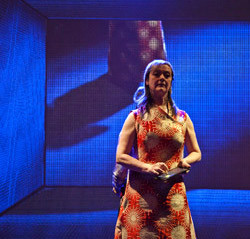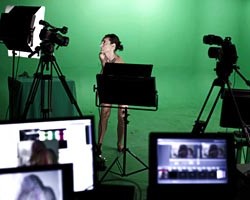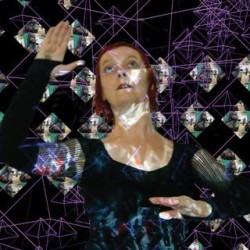Interview to KONICLAB
Kònic thtr is a Barcelona based artistic platform focusing on contemporary creation at the border between art and new technologies. Its main center of activity is the application of interactive technology to artistic projects. Kònic thtr is internationally renowned for the use and incorporation of interactive technology in creative projects. Their work have been shown in Spain, Europe, America, Asia and Africa. Through the research processes undertaken by Kònic Thtr since the beginning of the 1990’s, the company has developed a unique and personal language in this field of contemporary creation.
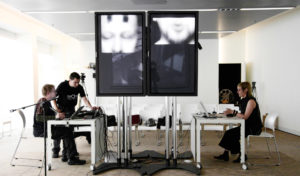
1. When you start an artistic multimedia theater project, do you guarantee yourself in advance having the necessary budget through residencies or external funding from Theatres or you usually work in self-production? And what are the real costs of your technological production as example?
KONIC Depending on the project we have in mind and the availability of funding, we work with different timings and budgets. Over the (many) years that we have dedicated to theatre and technology, we have acquired skills and knowledge that permit us to produce works with a very small team of four or five collaborators and auto-produce works when the economy is not buoyant. This means that we can do small scale project, with a limited amount of pre-booking for around 20-25K€. On the other hand, we can do large scale projects, with larger team of people participating in the company. When we work with non-readily available technology, such as our recent works with high speed networks, the budget is partly taken in charge by the technological partner who will provide the high bandwidth connection and team to operate it. This is an interesting way for us to work, as it means we are collaborating with engineers and exchange with them, and at the same time they support the work so that the budget for the piece stays reasonable.
2. In a case of a “call” for producing multimedia theater to stimulate the work of new authors or for a creation of a new work, which do you think is an adequate amount that a Theater should allocate?
This is a difficult question. It depends on the type of residency, if it does include a technical team at disposal to do research on technologies, video, light etc. The main problem is not so much the amount than the precarity of the work in general. It is becoming more and more difficult (especially in Spain, but we feel it is a general problem) to find co-producers to make good productions. The problem is that the precarity is also affecting the residencies, and a lot of times the spaces that offer residency have a very limited amount of funding, and rely more on the availability of space and knowledge that they can offer to the artist, than on the ability to remunerate the research that is taking place in their center.
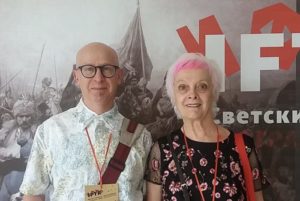
3. Can the residency system be useful for the creation of multimedia theater? What does a residence imply for this theater and in the case, what should a theater / festival offer a residence for an entire crew or company?
We think that the residencies should be oriented towards research, a part of the development of the creative work, the pre-production of the work, that is not covered by productions. To support the pre-production processes is what we would expect from the residency centers, especially when the work implies the use of technology. This should also help to generate a cultural tissue, giving artists the tools to develop new ideas and praxis, and connect them to other artists.
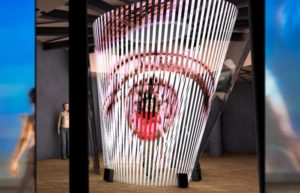
4.The fact that funding is always so low as we observe in this period, does not perhaps oblige the artist to “break up” the work in too many segments of work that are likely to lose continuity and novelty to the work itself? How can we direct a certain theatrical cultural policy to a greater investment by making the theaters understand the complexity (and costs) of this theater?
Even if this is not the best condition, creating a work in a modular way is possible and can be interesting, as long as the work is coherent. As we work with diverse media, the work will evolve with time in the various facets of the piece as they get developed even if in segments. On the other hand, the problem arises when one is obliged to do so because of poor financing, so it is not a choice but the only alternative.
In these times of austerity, an additional problem for unconventional stage proposals (such as for example the ones that rely on technology) is that they are more affected by the reduction of funding than more conventional theatre. The producers, the exhibitors are wary to take ‘risk’ (yes, they see this kind of proposal as a risk…) and therefore there is even less funding going to these proposals.
We have to convince the theatres that they need to show technological proposals, and to make the ideas these proposals convey accessible to the audience. From our point of view, it is important to focus on the content, which is what theatre is about. The collectives working in this field are bringing content to the stage through innovation. Contents related to our technological era using languages that make culture a living and evolving entity.
The cost is inherently related to the design of the work. It is difficult to evaluate, but possibly the idea of higher cost of a piece relying on technology compared to conventional theatre is not so true anymore. New professionals are appearing who specialize in technology for the stage, and many software and hardware solutions, that would have been very expensive only a few years ago because they would need time to develop specifically, are now readily available.
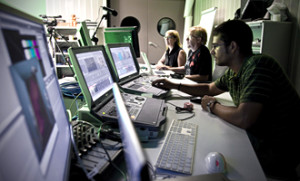
5. Is there an ideal formula for creating this kind of show? What situation do you know that would correspond to a kind of “good practice” (residential or production) linked to the technological theater?
Our best experiences, both in production and residency where in fact initiatives from technological partners rather than from theatres. Somehow there is more interest for people who work in the technological research to develop cultural content that can serve them to test their technology in a context that can also give them visibility, than theatres showing interest in introducing technology into their contents. There are examples of using high velocity internet to transmit opera in real time, or to give masterclasses with a teacher in a city and the students in another city. Or using 360º cameras to film the opera etc.
So these companies or research centers are there and have some interest in showing to culture what their technology can do. They have the skills and the equipment available and if you have the opportunity to collaborate with them, they can be very open to new ideas.
A research agreement to collaborate directly with technology specialists and or research centers is in our experience a way to explore new formats and to be able to have interesting feedback in the way we use technology. In the frame of such agreements, we have had the opportunity to collaborate for instance with the department in artificial intelligence from the higher council for scientific research in Spain, and develop several projects in which we used artificial intelligence for pattern recognition in the use of sensors for dancers. More recently, we are working with specialists in the field of high bandwidth internet. Their work normally consists in connecting scientific research centers from all over the world with extremely fast internet. Working with them in order to develop artistic projects is very challenging, because neither them nor us do really know what the outcome will be. We have successfully showed the results of such collaboration in theatres were part of the audience was interested in the technology and the other part in the artistic content – the project Near in the Distance that was shown in Viena (2015) and in Linz (2017). There need to be mutual trust between the teams and this is a good start for making good projects.
6. In your opinion, is there any new technology that has not yet been explored and that would be useful to a “new format” of technological theater? For example, Robotics or AI?
Artists are very curious people and probably all technologies have been explored ! There is a need for many artists to explore the possibilities that are infusing our everyday life, but in our opinion, it will take some time until these elements are fully understood and the technology made available to artists so that new ways and new format really start to happen.
We cannot compete with technology in order to get the attention of an audience that is nowadays immersed in social networks. These social networks have at their disposal the very latest development in big data analysis and artificial intelligence software that they constantly adapt and develop in order to offer the best experience to their audience. In some ways they compete with theatre, and from our perspective we need to preserve the important part of theatre which is the contents. The contents that can be brought to the stage by using contemporary technologies are where we need to focus as artists.
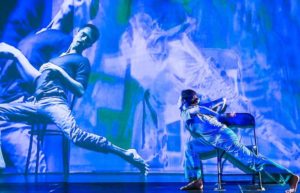
7. The consideration that there are few productions or few groups that propose innovative ways in terms of theatrical narration creates a limitation for a theorical analysis of the phenomenon of the so-called ” intermediality?
From our point of view, innovation is created by specific projects who differ from others with proposals that may be a little ahead of their time and bring something qualitatively different, linked to the concept of innovation. They are never many projects, but they are models. These models are the ones that can be analyzed and studied to differentiate them from others. They might create a trend or not, but they are unique/different and can be studied.
It is correct that with the lack of funding, there is an increased difficulty to create such works since they require longer research times, and also the lack of opportunity to show transmedial works in theatres, many artists who dedicated part of their creation to new media have opted to dedicate less time to this type of shows. There is less production, but at the same time younger artists introduce technology in their work in a more informal manner using readily available technologies on stage and this is positive in our opinion.


